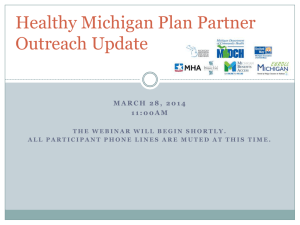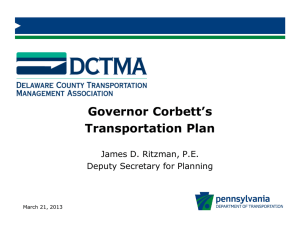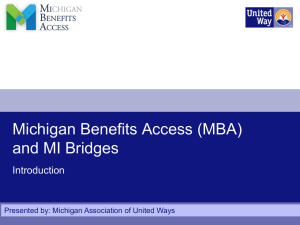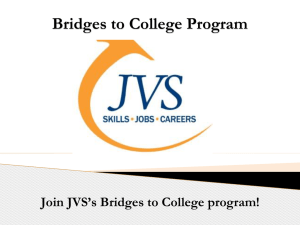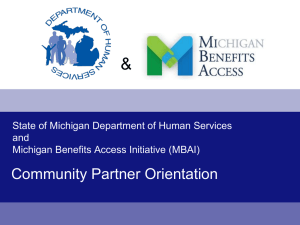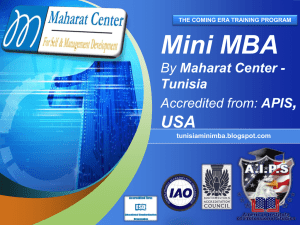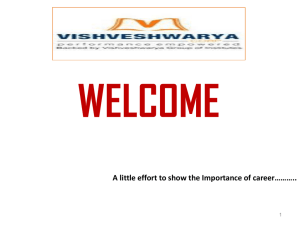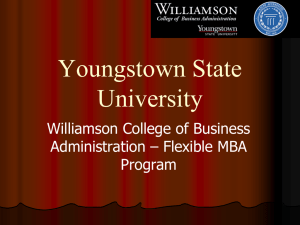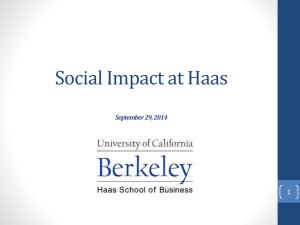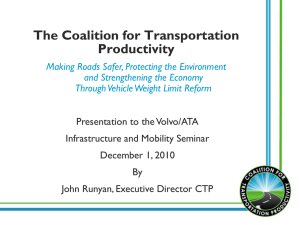Michigan Benefits Access and MI Bridges Orientation 2.21.14
advertisement
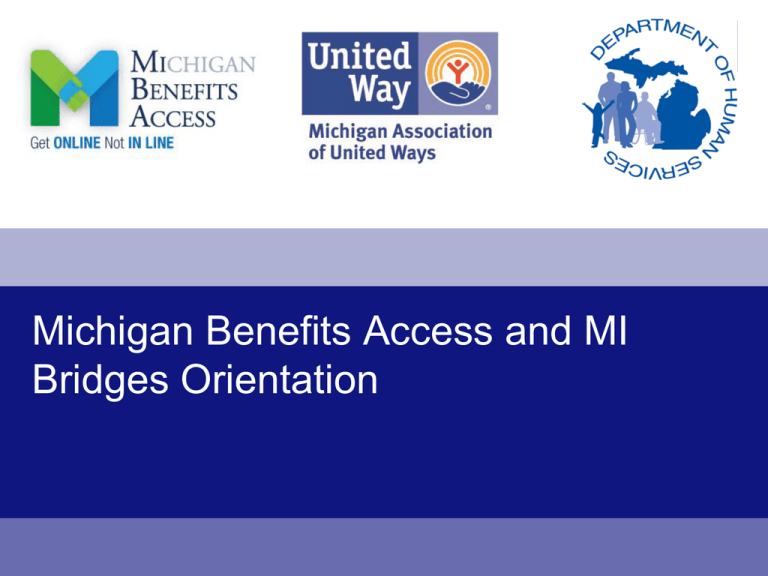
Michigan Benefits Access and MI Bridges Orientation MICHIGAN BENEFITS ACCESS HISTORY AND VISION Need and Opportunity • Michigan hit tremendously hard by 2008 recession • Unprecedented numbers of households qualify for public work supports • State of Michigan and nonprofits struggle to meet the needs of low-income families • Public work supports go unclaimed in Michigan annually Reasons Why People Don’t Apply Lack of knowledge, distrust of government, welfare stigma, too many stops, missed time from work, perception that employed aren’t eligible, denied in previous application. Department of Community Health U.S. Department of Education Department of Human Services IRS Public – Private Partnership • A statewide stakeholder group of 40 non-profits and state agencies, led by the Michigan Association of United Ways, researched innovative strategies for a streamlined benefits delivery system. • Both government officials and non-profit leaders moved toward parallel plans to create an easy-to-access, online benefit application and delivery system coupled with nonprofit outreach. • Multiple private foundations provided funding to develop the technology and bolster the outreach and education. Increase the economic stability for Michigan families by connecting them to multiple public benefits through MI Bridges web based system and Community Partners A Stepped Approach to Financial Independence 7 Michigan Benefit Access Vision MI Bridges Technology: Key Goals • Give DHS applicants anywhere, anytime access to apply for DHS programs and check on their case status. • Provide easier benefit maintenance through uploading of documentation online. • Improve access to public benefits for those in need of financial support. MI Bridges Technology: Key Goals • MI Bridges Success for 2013 • 786,297 MI Bridges applications in 2013 • In addition: • 936,576 clients viewed their correspondence in MI Bridges • 237,484 clients logged in to check their benefits • 472,625 documents uploaded to MI Bridges • 229,900 report my changes • 335,574 text message notifications sent regarding new correspondence • 377,626 e-mail notifications sent regarding new correspondence Data provided by DHS MI Bridges Outreach: Key Goals • Educate a broad set of social service networks to engage clients with MI Bridges. • Train CBOs on how to navigate MI Bridges and assist clients directly with benefit applications. • Develop a referral system that will direct potential benefit recipients to organizations capable of providing application assistance. Target Households • Seek to engage households that have: • Only applied for one benefit • Applied before but denied • Limited reading or computer literacy • Never applied before • Lack transportation and/or computer access Introduction to MI Bridges and Community Partners What is MI Bridges? • 24-hour secure internet portal to DHS benefit applications. • Directly linked to MDHS Internal Bridges system for application processing. • Developed and maintained by the Michigan Department of Human Services. • Allows households to create an account to apply for benefits, check case status, and recertify all online. MI Bridges – What Can You Do? Apply for Food Assistance, Medical Assistance, Childcare, Cash Assistance, Energy Assistance, and Non-Energy State Emergency Relief View All Program Status – Allow the case owner (head of household) to view benefit status online Access Control – Allow the case owner (head of household) to grant case viewing permissions online to any case member Correspondence – Allow recipients to view their correspondence electronically Electronic Notification – Allow recipients to receive emails and text when new correspondence is generated Increased benefit history view – Allow recipients to view two months prior, current and future month benefit status 1-888-MIBRIDGES www.michigan.gov/mibridges Courtesy of MDHS 1-888-642-7434 16 Self-Service Processing Centers (SSPC) West SSPC 5321 28th St. Court SE Grand Rapids, MI 49546 1-877-522-8050 (phone) 1-877-522-8055 (fax) Central SSPC 7109 W. Saginaw Highway 1st Floor Lansing, MI 48917 1-877-416-4227 (phone) 1-517-241-8642 (fax) East SPCC P.O. Box 33240 Detroit, MI 48232-9829 1-877-274-9099 (phone) 1-877-274-9094 (fax) DHS-Self-Service-Processing-Center@Michigan.gov 17 LEVELS OF ENGAGEMENT Community Partner History • Currently have 1,300 registered (this function will be disabled) • Small amount have submitted MI Bridges apps • Need to clean up and streamline • Focus now on quality, not quantity Community Partners • The Michigan Department of Human Services is seeking community partners. • Two ways that organizations can get involved: • Access Partners • Navigation Partners Access Partners • Agree to promote MBA and MI Bridges by: • Displaying promotional materials • Providing a computer(s) to be utilized by clients to access MI Bridges • Individuals fill out applications by themselves. • Examples: libraries, community centers, schools Requirements: • Completion of an MBA orientation webinar/presentation or inperson navigation training. • Partner application submitted to MDHS. Access Partners Benefits: • Access Partner ID Number from MDHS. • Ongoing communication from MDHS regarding policy updates and number of MI Bridges applications generated through your organization. • MBA promotional materials (posters, fliers, templates). • Applicant resource materials, including client handouts and identification signage. • Information about additional training opportunities. • The organization will be represented and listed as an MBA Access Partner on MDHS and MBA websites. Navigation Partners • • Agree to promote MBA and MI Bridges by: • Displaying promotional materials. • Providing a computer(s) to be utilized to access MI Bridges. • Providing technical assistance and one-on-one navigation assistance. Directly help individuals who may be unable to use the system enter data for the application. Navigation Partners Requirements: • Successful completion of MBA and MI Bridges Navigation Training • Partner Application submitted to MDHS • Individuals providing assistance: • Submit MBA Navigation Partner User ID application request to MDHS • Authorize MDHS to complete a background check • Background checks occur on a yearly basis • Memorandum of Agreement with MDHS • Participate in trainings and/or webinars for updates • Participate in quality assurance reviews Navigation Partners Benefits: • Receive a Navigation Partner ID number from MDHS • Individual user ID numbers for agency staff and volunteers • Communication from MDHS • MBA promotional materials and signage • Information about additional training opportunities • Ongoing technical assistance on MBA integration and sustainability • Promotion as a Navigation Partner through DHS and MBA • Quarterly information on benefits your clients accessed through MI Bridge INTEGRATING MBA AND MI BRIDGES INTO YOUR ORGANIZATION Integrating the Use of MI Bridges How do you think your community will receive online bundled benefit access through MI Bridges? How does benefit access fit with your work? Community Outreach Coupled with MI Bridges Expanded Technology • Possible locations for MI Bridges access = Labor halls; community based organizations; churches; community clinics; libraries; early learning centers 27 Integrating Michigan Benefits Access When choosing a Levels of Engagement, consider capacity of agency. Assess the type of services currently provided by agency (i.e. already assisting with paper applications). Tap into the availability of volunteers or AmeriCorps members to connect with more people at multiple sites. Take advantage of existing events in your community to share information about MI Bridges or provide direct service (i.e. Show me the Money Day). MBA Outreach Resources DHS Community Resource Coordinators are able to provide information about MI Bridges and opportunities for training. AmeriCorps members serving as MBA Community Resource Navigators throughout Michigan. Members provide: Agency capacity building Limited client application assistance Assist in coordinating training events Share benefits of MI Bridges with CBOs Food Bank Outreach workers directly help people complete food assistance applications statewide Training Opportunities The orientation is suited for a network of community based Access Partners seeking an opportunity to ask questions and develop a plan of how best to incorporate benefits access into their community. Webinar dates will be posted on the MBA website. Orientation webinar - 1 hour MBA and MI Bridges Navigation training provides instruction on how to navigate the MI Bridges system. Successful completion of this training is required to be eligible to become a Navigation Partner. Full in-person MBA and MI Bridges Navigation training - 3 hours Training Opportunities Continued Prescheduled, in-person training events that are open to the public will posted on the Michigan Benefits Access website – www.mibenefitsaccess.org Pre-registration will be required through the website There will be a limit on the number of seats available per training event based on location At least 8 individuals must register to keep training date Training can also be provided upon request completing a Training Request Form which can be found on the MBA website at www.mibenefitsaccess.org or by contacting Jeanine Stanley, MBA Program Director at jstanley@uwmich.org Next Steps: For additional information or questions please contact: Jeanine Stanley, MBA Program Director jstanley@uwmich.org or 517-664-9809 32
